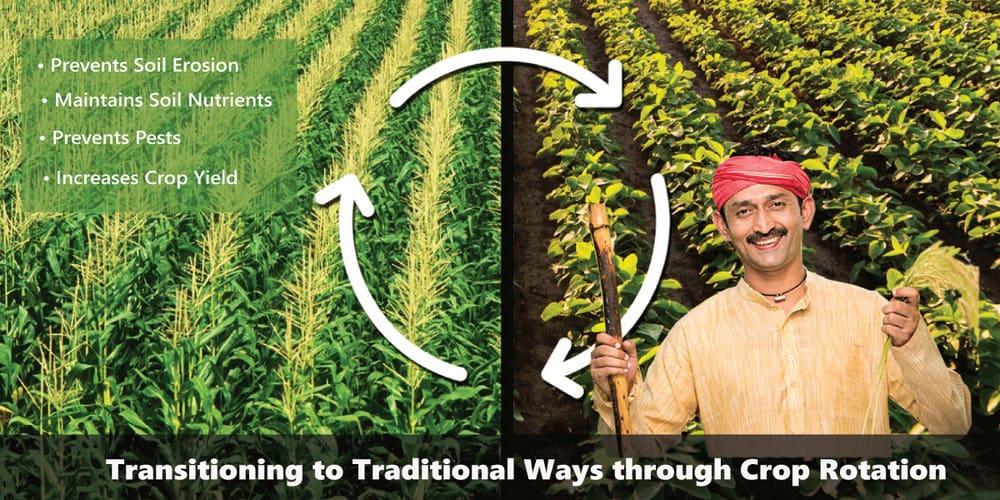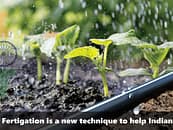Crop Rotation
Each crop has its unique set of requirements in terms of nutrients derived from soil. It also has different susceptibility to pathogens and pests. If a farmland is used to cultivate the same crop every year, the same nutrients are drawn out of the soil and it leads to deficiencies of specific nutrients. Moreover, mono culture is a breeding ground for the same variety of pests and pathogens which are difficult to get rid of. All of it leads to resorting to heavy doses of chemical fertilizers and pesticides. Crop Rotation solves this problem to a great extent by restoring the health of soil naturally.
Crop rotation is the practice of cultivation of different crops on a particular piece of land over a period of time. The combination of crops to be grown is designed in a way to ensure soil nutrients are sustained, pest populations are controlled, weeds are suppressed and soil health is restored. All of it by almost no use of synthetic chemical inputs.
Crop rotation leverages the natural tendencies of each crop type to restore the physical and the chemical health of soil. For example Nitrogen-fixing legumes such as soybeans and alfalfa help in fixing atmospheric nitrogen into the soil through root nodules. This nitrogen is then available for subsequent crops. Deep rooted cover crops draw up key nutrients such as potassium and phosphorus from deep in the soil profile. These nutrients are then naturally available to the shallow rooted crops. Hay crops on the other hand come with an advantage of improving tilth and bulk density of soil. Decomposition of their fine roots adds the organic humus to the soil.
Apart from restoring the soil health, crop rotation also has a great impact on prevention of pathogens, weeds and pests in the crop. When a non-host crop is rotated immediately after the host, pathogens preserved in crop debris do not have the necessary conditions for survival and the disease spread is controlled.
Crop rotation indeed is a scientific approach to sustainable farming methods. It also safeguards the farmers against various commercial and economic risks. The simple reason being the fact that different crops have resistance capacities against different adverse climatic conditions. Hence risk of crop failure due to adverse weather conditions is minimized. Moreover, Crop rotation requires growing and harvesting crops at different times, allowing farmers to spread their workload evenly and cultivate more land with the same amount of equipment and labour.
FocusAgritech’s Outlook: Crop rotation as an agricultural practice is not only easy to follow but also saves huge cost to the farmer by eliminating the need for chemical inputs. The output is free from harmful chemicals making it more desirable for the modern health conscious consumer. This traditional wisdom has a measured impact of improving soil nutrients by over 33% by researchers. There is a need for popularizing this sustainable practice through simple digital interventions like mobile app support for elaborate guidelines on combination of crops and soil health cards to keep a check on the impact of this practice. As we move towards more sustainable ways, crop rotation is an easy way to transition from conventional chemical based farming practices.
Recent Article
eNAM: The Technological Evolution Of Mandis







